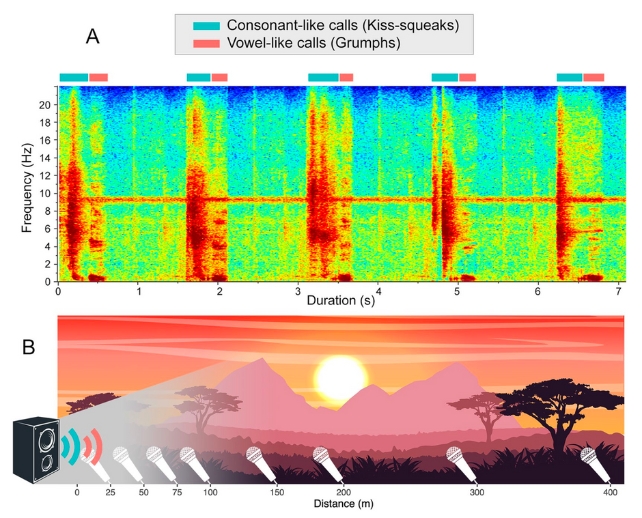
According to a recent study, the transition from dense forests to open plains during the Miocene era might have led ancient hominids to shift from vowel-based to consonant-based vocalizations.
Researchers in the UK analyzed the acoustic characteristics of recorded orangutan vocalizations, thought to resemble early human sounds. They projected these calls across an African savannah to investigate how the environment influenced the speech abilities of our ancestors.
Charlotte Gannon, a language psychologist from the University of Warwick, and her colleagues explain Africa’s evolving paleo-climate as a crucial factor in the mysterious journey of spoken language evolution that vocal hominids entered and verbal humans emerged from millions of years later.
According to their findings, our early hominid ancestors likely employed proto-consonants as a means of effective communication in response to the changing environment.
“The ecological settings and soundscapes experienced by human ancestors may have had a more profound impact on the emergence and shape of spoken language than previously recognized,” writes the team in their published paper.
During the last 17 million years, grasslands have spread across Eurasia and Africa, influenced by continental tectonic shifts, global cooling, and aridification.
Archaeological discoveries and inferences from paleoecology help us understand how these transformations affected hominid anatomy and behavior. However, the absence of soft tissues in the fossil record hinders the reconstruction of the evolution of vocal signals and spoken language.
“By taking advantage of orangutans’ arboreal consonant-like and vowel-like calls and moving them to an open landscape setting,” Gannon and colleagues explain, “we can recreate, as close and realistically as it is possible today, the scenario in the Middle and Late Miocene (16–5.3 mya) when hominids transitioned down from trees to an open landscape.”
The scientists utilized archived recordings featuring syllable-like combinations from 20 wild orangutans’ calls, playing them back in a South African savannah environment.
The dataset of 487 calls from Sumatran (Pongo abelii) and Bornean orangutans (Pongo pygmaeus) featured consonant-like kiss-squeaks and ‘grumphs,’ resembling vowels. You can listen to the sounds here.

To assess the audibility of the calls at different distances, they were recorded at 25 meters (82 feet) intervals, covering a total distance of 400 meters. The study revealed that vowel-like calls, comparable to the ‘a’s and ‘e’s in our words, didn’t propagate as effectively as consonant-like calls, akin to the ‘b’s and ‘d’s.
Following 125 meters, vowel-based calls became significantly less audible compared to consonant-based calls, whereas consonant-based calls exhibited a marginal decrease in audibility beyond 250 meters.
Over a distance of 400 meters, nearly 80 percent of calls relying on consonants remained audible, whereas less than 20 percent of calls based on vowels could be heard. This highlights the enhanced effectiveness of consonant-based calls when projected across open landscapes.
“Where dense forests had offered equivalent performance for both call categories,” the authors write, “the newly emerging dry and open landscapes offered superior transmission efficiency to consonant-like calls over mid and long distances.”
<p>An explanation for some characteristics of modern spoken languages may lie in the fact that early stages of speech evolution were more adept at perceiving consonants than vowels.</p>
Rewrite the above lines for the blog, change the wording, use SEO-friendly wording, use simple but best English, do not change the meaning, do not summarize any line, and it is important that do not remove any HTML inline tags, especially anchor tags.
The researchers suggest that the transition to open plains could have played a crucial role in hominid vocal communication, given the prevalence of consonants in modern human languages.
Consonants serve as natural speech cues, and individuals learning a language often use them to visually segment sentences and introduce processing pauses even when none naturally exist.
“In the new ecological settings, hominids now had an element available –consonant-like calls – in their vocal repertoire with enhanced perceptibility, if and when required,” the authors conclude.
“The ecology of ancient hominids may have molded human modern verbal behavior to a larger extent than hitherto appreciated.”
The research findings are detailed in the journal Scientific Reports. You can access the study here.





